Many martial artists like to train in both external and internal aspects of their martial art — be it Karate, Tai-Chi, Kuntau-Silat or another martial art — we see them in our San Diego martial arts studio all the time. This is because early in one’s training, it is much faster to observe progress in the external aspects of martial arts as compared to the internal aspects of such arts. You may enter the dojo or training hall not knowing any martial arts, and feeling very awkward, clumsy, and self conscious. But if you stick around, literally within weeks you can feel how your body is starting to “feel” the movements. Very soon, the techniques become easy for you to execute, and a little later — instinctive and second nature. In terms of initial “bang for the buck”, external martial arts such as Krav-Maga, MMA (as it is practiced most often), and the external aspects of Karate offer a very rapid and satisfying initial learning curve. You can become quite proficient at self-defense relatively quickly, which suits many students.
But wait — there’s more (to martial arts)!
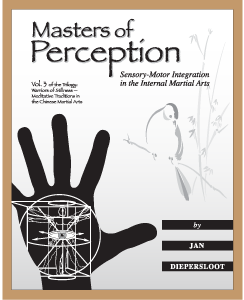 Contrast that with the initial rate of progress in the internal martial arts (such as the internal sides of Karate, as well as traditional Tai-Chi — predating China’s state dictum in the mid 1940, which had the effect of steering mainstream Tai-Chi away from roots as a highly effective martial art). On the internal martial arts side, concepts take literally years for the student to master. It takes this long because one of the aims of the internal side of martial arts is to get to us to know ourselves very well, and to teach us to be able to take control of our subconscious. If you have observed a skillful martial artist who has mastered the internal side of his art, the results are quite striking — almost the stuff of dreams: calm perception of his or her surrounding, amazing evasion skills, and generation of tremendous force without any apparent effort. You have to see it to believe it. Of course, there are many other benefits to this approach, which are useful in one’s everyday life and not just in a self-defense situation.
Contrast that with the initial rate of progress in the internal martial arts (such as the internal sides of Karate, as well as traditional Tai-Chi — predating China’s state dictum in the mid 1940, which had the effect of steering mainstream Tai-Chi away from roots as a highly effective martial art). On the internal martial arts side, concepts take literally years for the student to master. It takes this long because one of the aims of the internal side of martial arts is to get to us to know ourselves very well, and to teach us to be able to take control of our subconscious. If you have observed a skillful martial artist who has mastered the internal side of his art, the results are quite striking — almost the stuff of dreams: calm perception of his or her surrounding, amazing evasion skills, and generation of tremendous force without any apparent effort. You have to see it to believe it. Of course, there are many other benefits to this approach, which are useful in one’s everyday life and not just in a self-defense situation.
In assistance to the aspiring students of the internal martial arts comes a recent book from master Jan Diepersloot: “Masters of Perception: Sensory-Motor Integration in the Internal Martial Arts“. I have known Sifu Diepersloot for several years, and have had the opportunity to train with him. He is a very skilful martial artist. Sifu Jan Diepersloot has trained in Taijiquan since the 1960s, with prominent Chinese martial arts luminaries such as master Fong Ha and master Cai Songfang. Since the late 1990s, he has been a student of master Sam Tam (Tam Maan Yin 譚曼彥). As all who have met him agree, master Sam Tam in an incredibly skillful martial artist, who possess encyclopedic knowledge of Chinese martial arts, and a great sense of humor (which makes his classes and seminars not jut informative but also entertaining).
Sifu Jan Diepersloot’s new book “Masters of Perception: Sensory-Motor Integration in the Internal Martial Arts” lays an inspiring framework and road map for the developing internal martial artists. It describes methods of qi and health cultivation, addressed power generation, and discusses the path to enhanced perception and awareness. I really liked master Diepersloot’s skillful explanations, which combine physical and anatomy with Eastern knowledge. If you are looking for a better understanding of the internal martial arts, I highly recommend Sifu Diepersloot’s book.
One of my favorite quotes in the book is of a metaphor from master Sam Tam, explaining the aim of the internal martial arts:
“We should grow like the trunk of a tree and not like the side branches. The trunk grows slower but will reach the greatest height, while the side branch will grow fast at first, but then slow to a halt.“
Here is another quote, which is in line with what we have pursuing at training in the Carmel Valley, San Diego dojo over the last few months. Here, Sifu Diepersloot explains the benefits that came to him from developing his body integration and axis control:
“The improvement in my central equilibrium began to resolve outstanding issues of body integration. Being more habitually upright, the alignment of the spine at both ends allows the body parts to cohere and integrate more fully. Adjustment in the lumbar curve allowed my lower trunk to integrate and cohere more fully with the upper trunk above, and with the foundation of the legs below. Adjustment in the cervical curve allowed better integration and coherence of the head with the torso. Keeping my hands and arms, so busy previously searching for openings to attack, calm and receptive, they began to really feel like extensions of my center. Thus, all my separate body parts began to fall into place and hang together, uniting themselves ever more concretely into the zhengti, the coherent, enlightened body.“
And, lastly, a favorite quote from Master Wang Xiangzhai (also known as Nibao, Zhenghe and Yuseng), the Chinese Xingyiquan master who founded the martial art of Yiquan (Yi – intent, Quan – fist or fighting):
“small movement is better than big movement; no movement is better than small movement.”
Have fun growing and developing on the martial arts path!

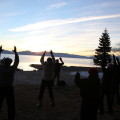
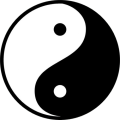
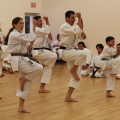
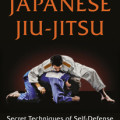
Basically the book is close to 200 pages of scientific jargon and babbling. Great Grandmaster Dai Long Pang said it best: “Those who speak endlessly about worthless theories and concepts are most often just covering for their lack of real practical knowledge”.
Tim: I disagree.
As a matter of full disclosure I can tell you that I am not related to master Jan Diepersloot in any way. I have trained with him, and found him to be a very skillful material artist.
In “Masters of Perception” master Diepersloot attempt to relate Chinese concepts of Chi and with Western understanding of anatomy and physiology. This correlation may be very helpful to some readers, while other readers may find this to be of little value.
What you say is true. I gather MR Diepersloot is very knowlegable martial artist from his first two books. However, I think with this book the author Diepersloot deserted his ‘target readers’, 99% of which are martial artists. This book seemed to be written for someone outside the martial arts.
If its true, an ounce of practice is worth a ton of theory, then this book has very little value
Tim: I agree that theory is fine and good. Practice is indispensable.
It is nice to see someone teaching the deeper aspects of internal martial arts.
Wish I could train with you. Too bad I am not in San Diego.
Jack